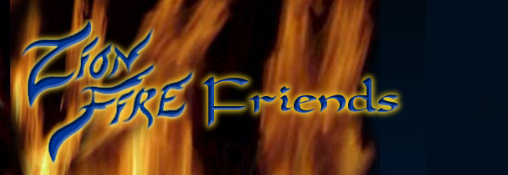At the cry of the first bird - Printable Version
+- ZionFireFriends (https://zionfire.com/forum)
+-- Forum: Ministry Round Table (https://zionfire.com/forum/forumdisplay.php?fid=6)
+--- Forum: Music - Teams - Song Writing (https://zionfire.com/forum/forumdisplay.php?fid=37)
+---- Forum: Lenten Hymn Meditations (https://zionfire.com/forum/forumdisplay.php?fid=44)
+---- Thread: At the cry of the first bird (/showthread.php?tid=933)
+- ZionFireFriends (https://zionfire.com/forum)
+-- Forum: Ministry Round Table (https://zionfire.com/forum/forumdisplay.php?fid=6)
+--- Forum: Music - Teams - Song Writing (https://zionfire.com/forum/forumdisplay.php?fid=37)
+---- Forum: Lenten Hymn Meditations (https://zionfire.com/forum/forumdisplay.php?fid=44)
+---- Thread: At the cry of the first bird (/showthread.php?tid=933)
At the cry of the first bird - HelenaZF - 03-01-2008
"At The Cry of the First Bird" is an ancient Irish poem, which has been set to music in a choral arrangement by Gilbert W. Martin. The text for the song derives from an ancient collection of Irish homilies known as The Speckled Book (Leabhar Breac). They were written partly in Latin and partly in Irish and constitute the most remarkable Irish ecclesiastical record of the period. An unknown Christian scribe wrote the vivid words of this passion scene sometime in the 12th century. The "cry of the first bird" is a musical motif throughout the brief composition.I learned the Samuel Barber version as a vocal student in college...the melody and words have never ceased to haunt me.
Sunrise
Dawning of a New Day
At the cry of the first bird,
They began to crucify thee,
0 cheek like a swan.
It was not right ever to cease lamenting;
It was like parting of day from night.
Ah, though sore the suffering put upon the body of Mary's Son,
Sorer to him was the grief that was upon her for his sake.
At the cry of the first bird,
They began to crucify thee,
0 cheek like a swan.
J.D. Weaver Wrote:Analyzing poetry can be a risky exercise. A poet tries to transmit feelings and images rather than specific details. The anthem speaks to me so strongly that I feel compelled to share some of the feelings and images evoked by this moving piece of music.Unfortunately, I could not locate an audio for the Gilbert Marting version, but I can share with you this YouTube video of a dancer working out a choregraphy to a version of Barber's art song.
I recall an occasion when my family and I were camping in southeastern Pennsylvania. I got up before daybreak to go out in a nearby field to watch the sunrise. As I looked down the valley to the East, I spotted a lone hawk winging its way toward me. It flew straight as an arrow, while periodically giving out a shrill cry as it signaled the dawn. Within a few minutes it disappeared into the West, and the sun broke over the mountain to the East. So Jesus spent but a short time on earth, signaling the dawning of the new Kingdom. He gave a loud cry and was gone; the victim of a cruel death.
l recall the feeling of sadness in my heart as the hawk disappeared from view. It is right that we should lament the passing of a majestic moment. In the same way we must grieve the suffering of Mary's Son. But as the poem says, he suffered more for Mary's grief and that of the Church, than he did from his own physical pain.
At the moment of his death his thoughts were on the plight of his own. John records that from the cross Jesus asked the disciple whom he loved to care for his mother. Mary is symbolic of the Church in this passage. He turned the care of the church over to his disciples.
As the hawk disappeared, the sun broke forth in all its glory. A new day had begun. At the moment of Jesus' death the Kingdom was dawning. Easter came. Like the parting of day from night, the new Kingdom replaced the old regime. But before the day could dawn, it was necessary that death have its due.
At the cry of the first bird,
They began to crucify thee,
0 cheek like a swan.
Jesus' life's blood had been drained from his very being. His cheek, which he had turned again and again to his tormentors, was now white like a swan. According to an ancient legend, just before a swan dies, it sings its most beautiful song. This is quite a miracle, since a swan has no song at all. Jesus gave out a loud cry and died. In that cry he took upon himself the suffering of all mankind. This is the song of our redemption; the most beautiful song of all; the song of Moses and the Lamb.
The music that Martin wrote for this anthem also deserves some comment. Written in a minor key, as befits a lament, the music evokes strong feelings of pain and sadness. The most Striking feature of the music is a pulsating bass pedal, which simulates the human heart beat. If you listen closely near the end, the heart skips a beat, then another, then two beats, and two more. It is finished.
http://www.jdweaver.com/essays/crybird.htm Copyright Jay D Weaver - January 17, 2002, excerpted
https://youtu.be/9NBTNB-0gZs
The Crucifixion" Hermit Songs, Samuel Barber
At the cry of the first bird,
They began to crucify thee, 0 swan.
Never shall lament cease because of that;
It was like parting of day from night.
Ah, sore was the suffering born by the body of Mary's Son,
But sorer still to him was the grief that for his sake
Came upon his mother.
lackJaPanther 1995 choreography session
